Bridging the digital divide and providing broadband for all
Target 2.1.A: In the developing world, 50 per cent of households should have access to the Internet by 2020 |
| Target 2.1.B: In the least developed countries (LDCs), 15 per cent of households should have access to the Internet by 2020 |
| Target 2.2.A: In the developing world, 50 per cent of individuals should be using the Internet by 2020 |
| Target 2.2.B: In the least developed countries (LDCs), 20 per cent of individuals should be using the Internet by 2020 |
| Target 2.3.A: The affordability gap between developed and developing countries should be reduced by 40 per cent by 2020 |
| Target 2.3.B: Broadband services should cost no more than 5 per cent of average monthly income in developing countries by 2020. |
| Target 2.4: Worldwide, 90 per cent of the rural population should be covered by broadband services by 2020 |
| Target 2.5.A: Gender equality among Internet users should be reached by 2020 |
Target 2.5.B: Enabling environments ensuring accessible telecommunications/ICTs for persons with disabilities should be established in all countries by 2020
|
Target 2.1.A: In the developing world, 50 per cent of households should have access to the Internet by 2020
Target 2.1.B: In the least developed countries (LDCs), 15 per cent of households should have access to the Internet by 2020
| |
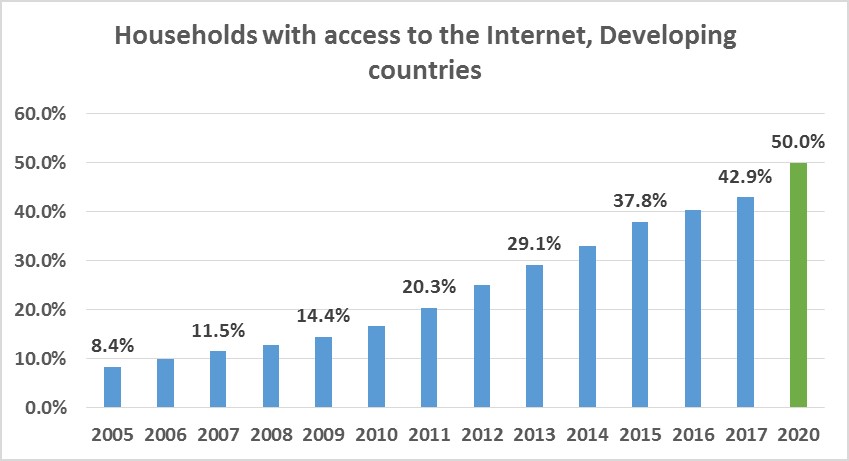 | 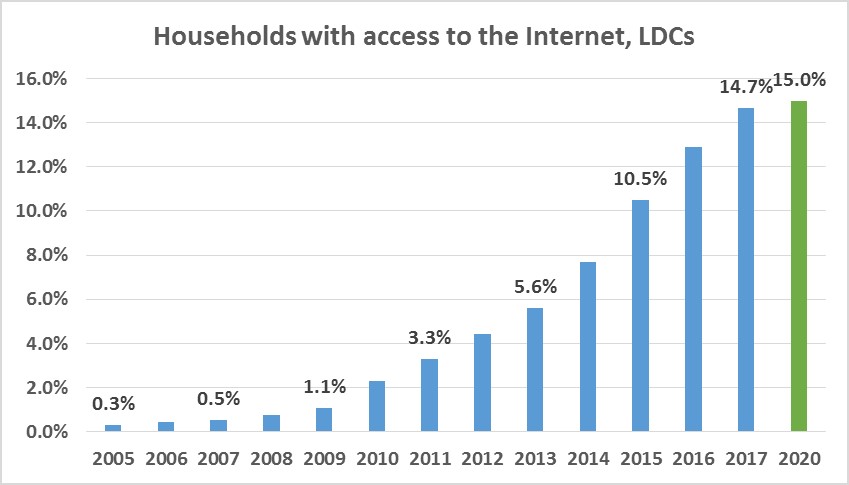
|
Source: ITU Statistics Website
Target 2.2.A: In the developing world, 50 per cent of individuals should be using the Internet by 2020
Target 2.2.B: In the least developed countries (LDCs), 20 per cent of individuals should be using the Internet by 2020
| |
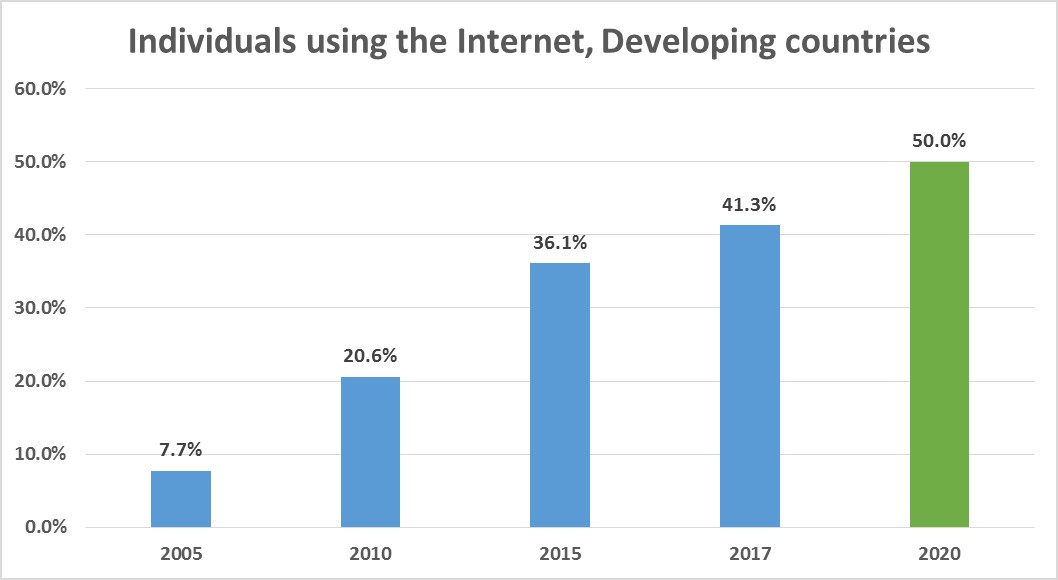 |  |
Note: *Estimate – Source: ITU Statistics Website
In 2015, the proportion of households in developing countries that had access to the Internet was 37.8%. By the end of 2017, the number of Internet-connected households in developing countries reached 42.9%.
In LDCs in 2015, 10.5% of households had access to the Internet; this proportion increased to 12.9% in 2016. By the end of 2017, the number of connected households reached 14.7%, just 0.3% shy of the target (for 2020).
In 2015, in the developing world, 36.1% of individuals were using the Internet, which increased to 39.0% in 2016. By the end of 2017, the proportion of Internet-connected individuals in the developing world reached 41.3%, meaning that an 8.7 percentage point increase is still required between 2018-2020 to meet the target of 50%.
The proportion of the population living in developing countries that were using the Internet in 2015 was 13.0%; over the following year, this increased to 15.6%. By 2017, the proportion of the population using the Internet reached 17.5%, leaving just 2.5 percentage points to meet the Connect 2020 target of 20%.
Target 2.3.A: The affordability gap between developed and developing countries should be reduced by 40 per cent by 2020
The difference in the affordability of fixed broadband and mobile-cellular services between developed and developing countries fell significantly during the period 2008-2012, followed by a slowdown over the period 2012-2014 and even an increase in the case of fixed broadband in 2014. The gap continued to narrow between 2014 and 2015. The difference in the affordability of mobile broadband services fell from 2013 to 2014 and continued to decrease, albeit only slightly, between 2014 and 2015.
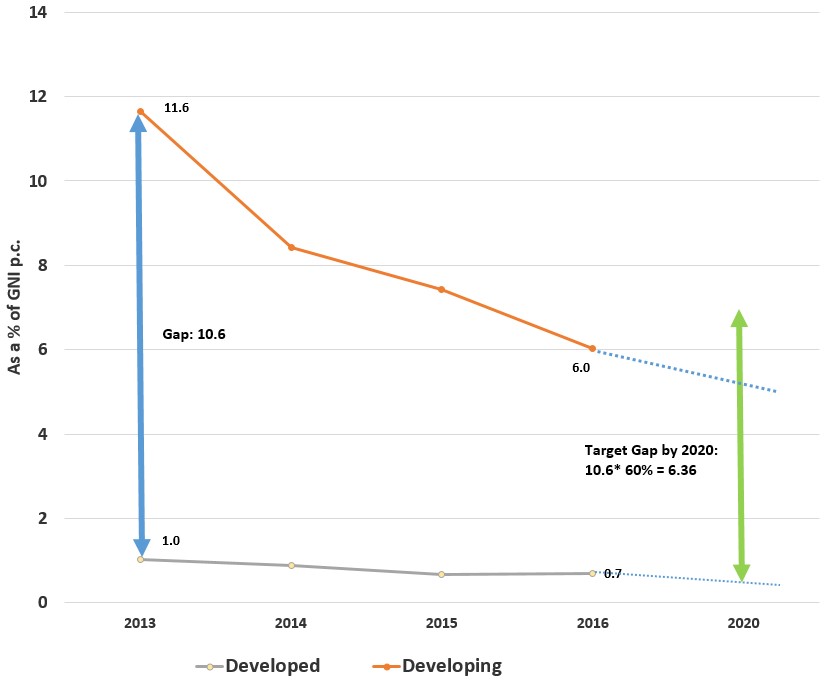
Target 2.3.B: Broadband services should cost no more than 5 % of average monthly income in developing countries by 2020
By 2017, a total of 120 economies (out of 160 for which data were available) had achieved the target of broadband services costing no more than 5% of average monthly income, including all developed countries and 78 developing economies, 18 countries more than in early 2015. Altogether, 18 developing countries and 38 LDCs for which data were available need to achieve further reductions in broadband prices in order to achieve the target, together, it should be assumed, with a number of other countries for which no data were available.
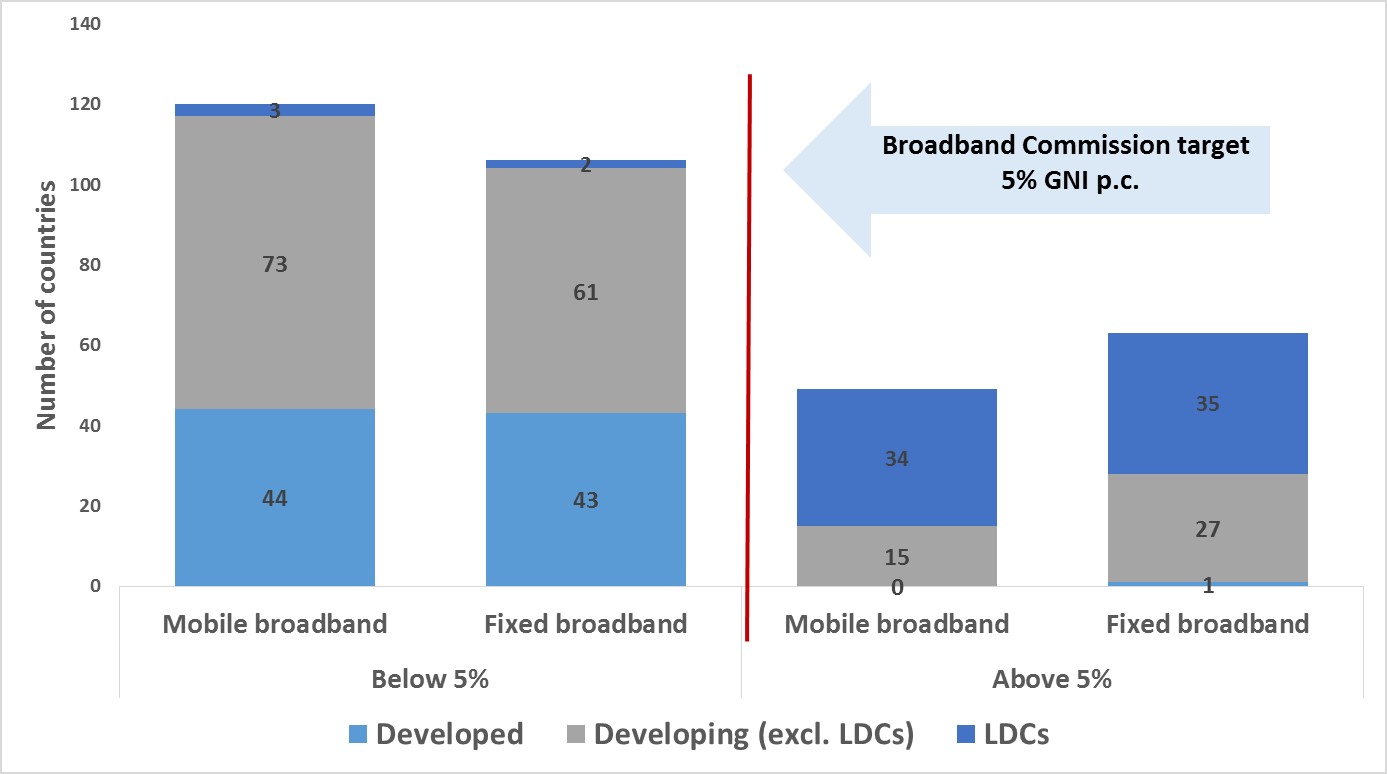 | 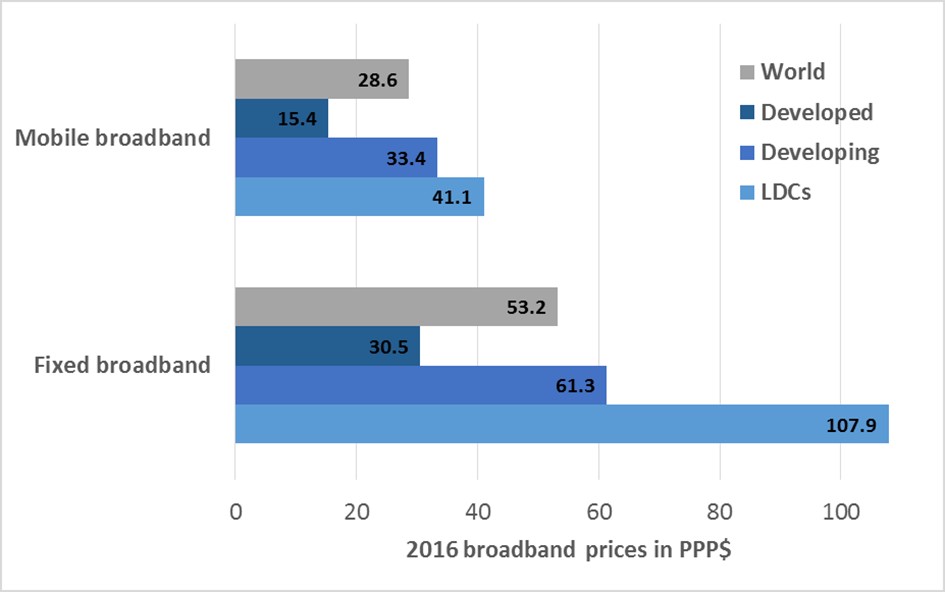 |
Target 2.4: Worldwide, 90 per cent of the rural population should be covered by broadband services by 2020
It is estimated that 3G network coverage grew from 45% of the world population in 2011 to 84% in 2016 (mobile-broadband networks; 3G or above), but to only 67% of the rural population.
Percentage of rural population covered by Internet
Source: ITU stats
Target 2.5.A: Gender equality among Internet users should be reached by 2020
Internet user gender gap
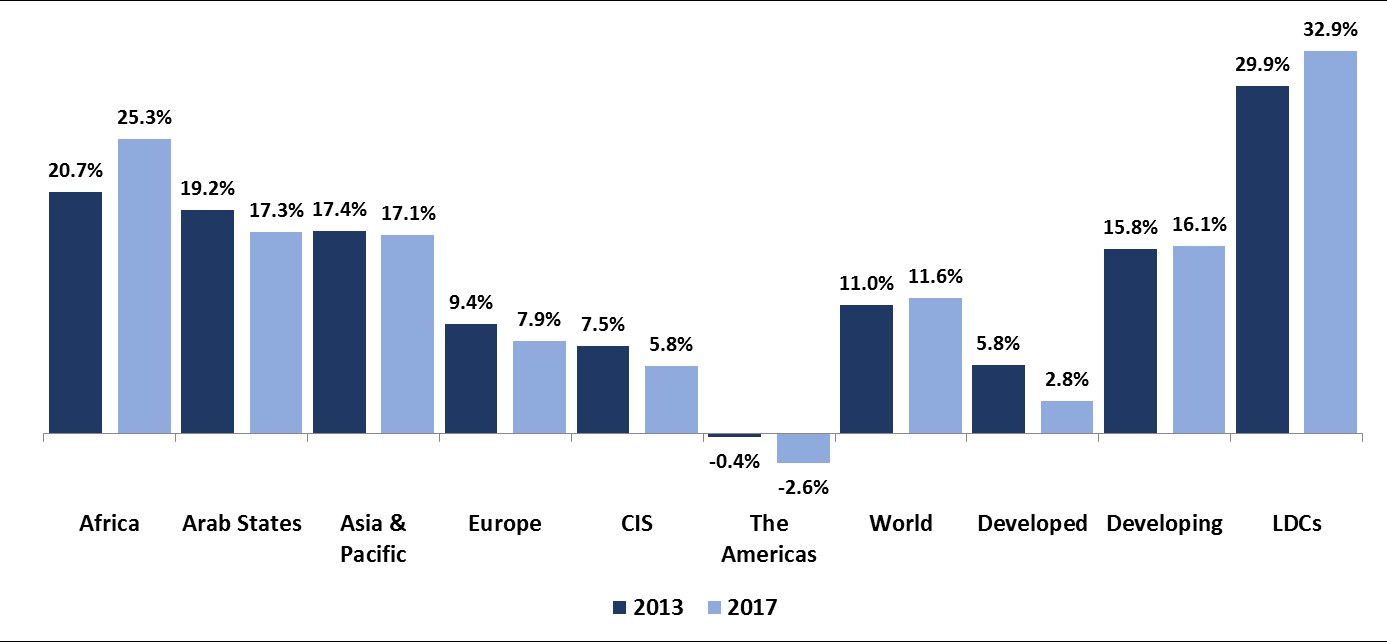
Source: ITU MIS Report
Data on Internet usage broken down by gender points to a clear and growing gender divide. In the vast majority of countries, the proportion of men using the Internet is higher than the proportion of women. ITU reports an Internet user gender gap in 2016 of 12.2%, which is a rise compared to the 2013 gender gap of 11.0%. Differences in levels of education and school enrolment are important factors that could explain why more men than women use the Internet. Some of the countries in which more women than men are Internet users are also countries that do well on the gender parity index (GPI), which measures parity between girls and boys in terms of school enrolment ratios.
Target 2.5.B: Enabling environments ensuring accessible telecommunication/ICT for persons with disabilities should be established in all countries by 2020
For the past four years, ITU-D has been raising awareness and building the capacity of ITU members to design enabling environments ensuring accessible telecommunications/ICTs for persons with disabilities. In particular, ITU-D has developed extensive training resources, and delivered in-person and online training courses, national web accessibility programmes, and made available self-paced online tutorials. The ITU-D Regulatory Survey collects data on the number of ITU Member States with accessible ICT policies and regulations. This data forms the basis for assessment of this target.
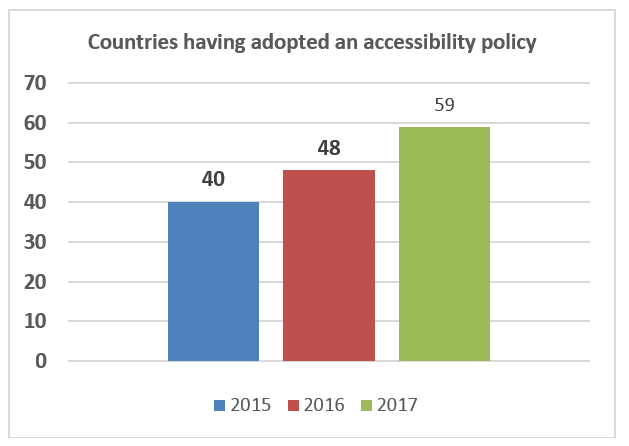
[1] Source: MIS Report 2017
[2] Gender gap is defined as the difference between the Internet user penetration rate for males and females in relation to the Internet user penetration rate for males, expressed as a percentage